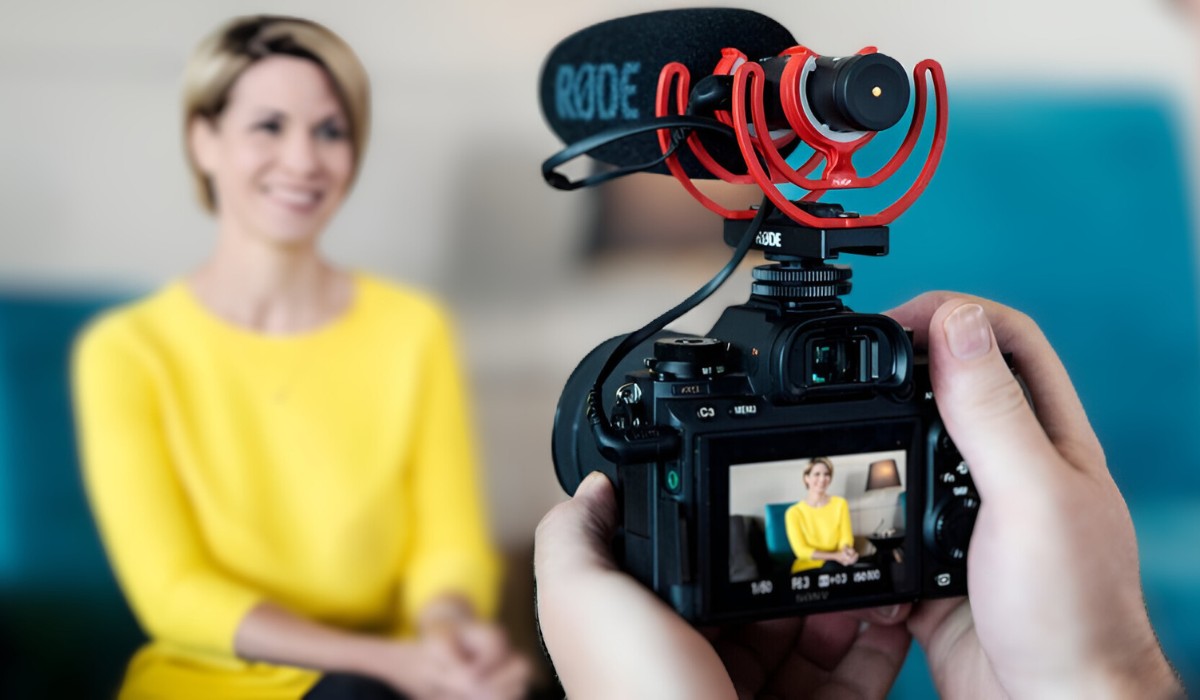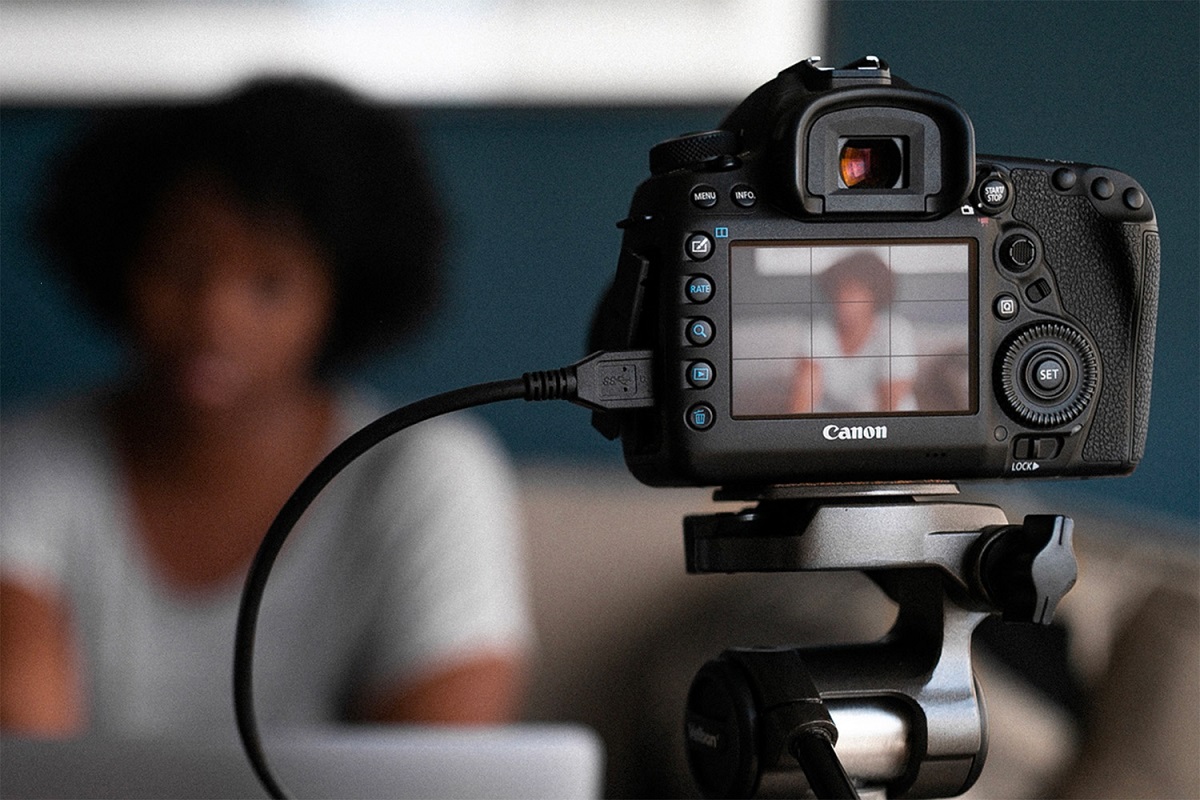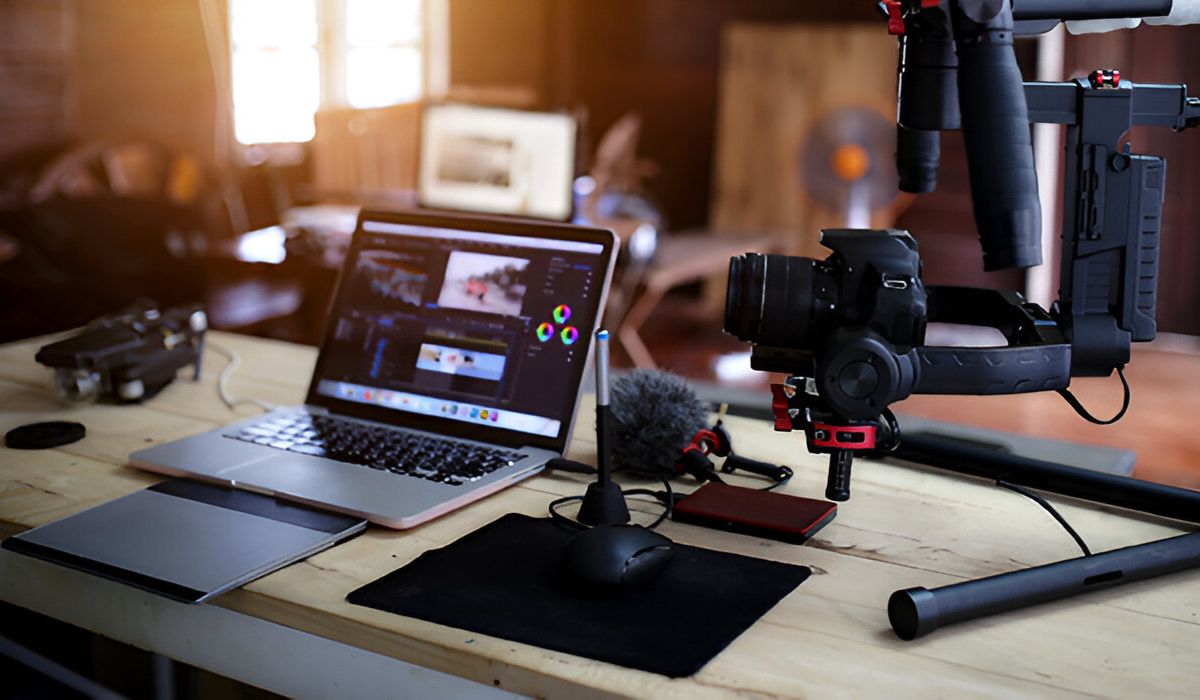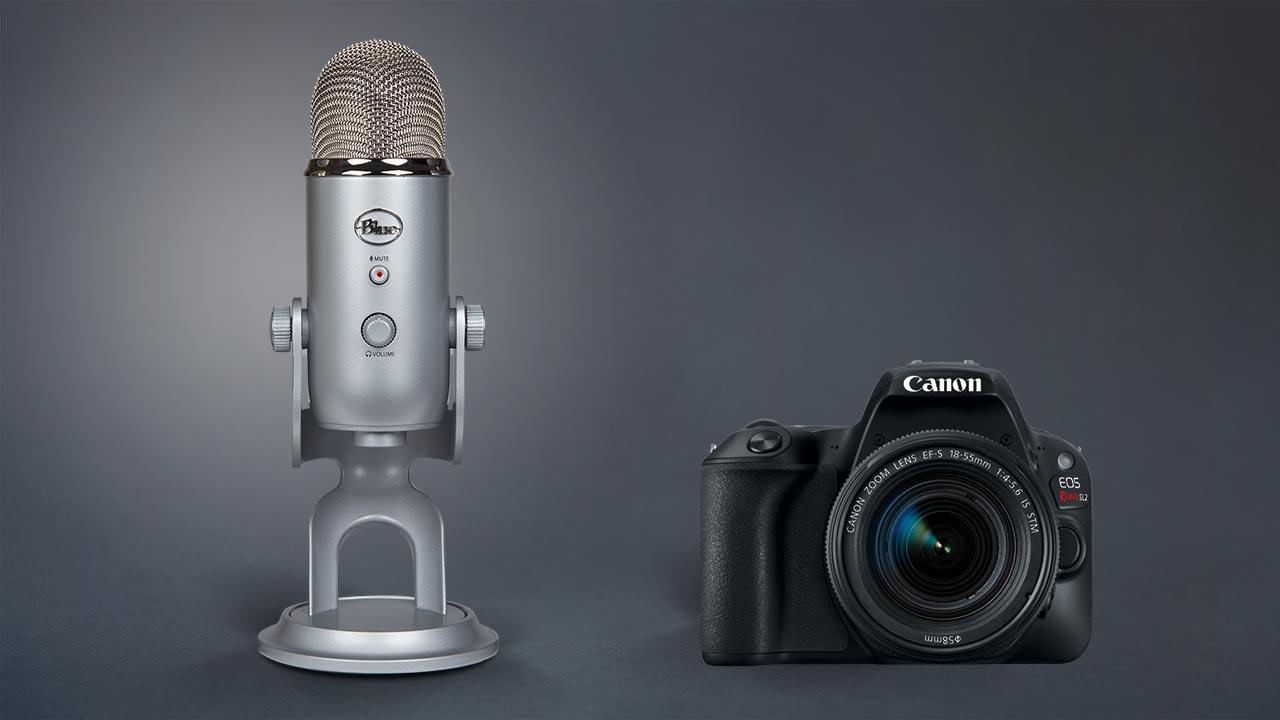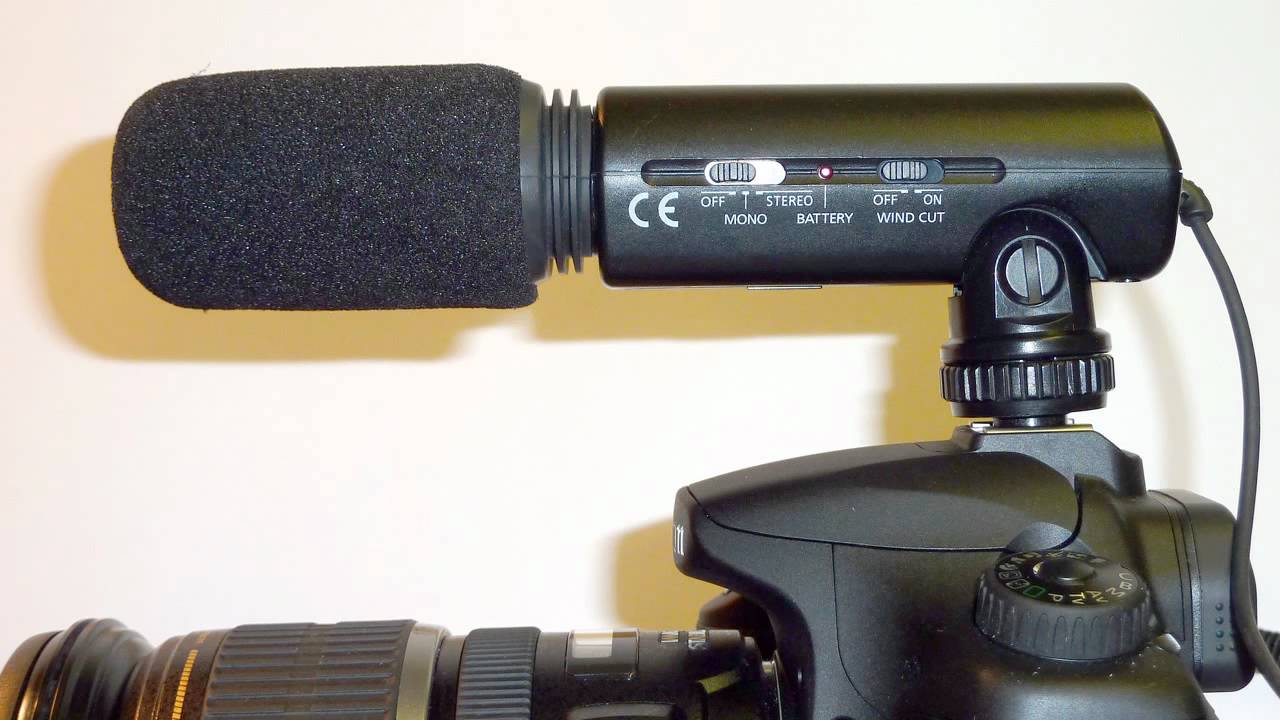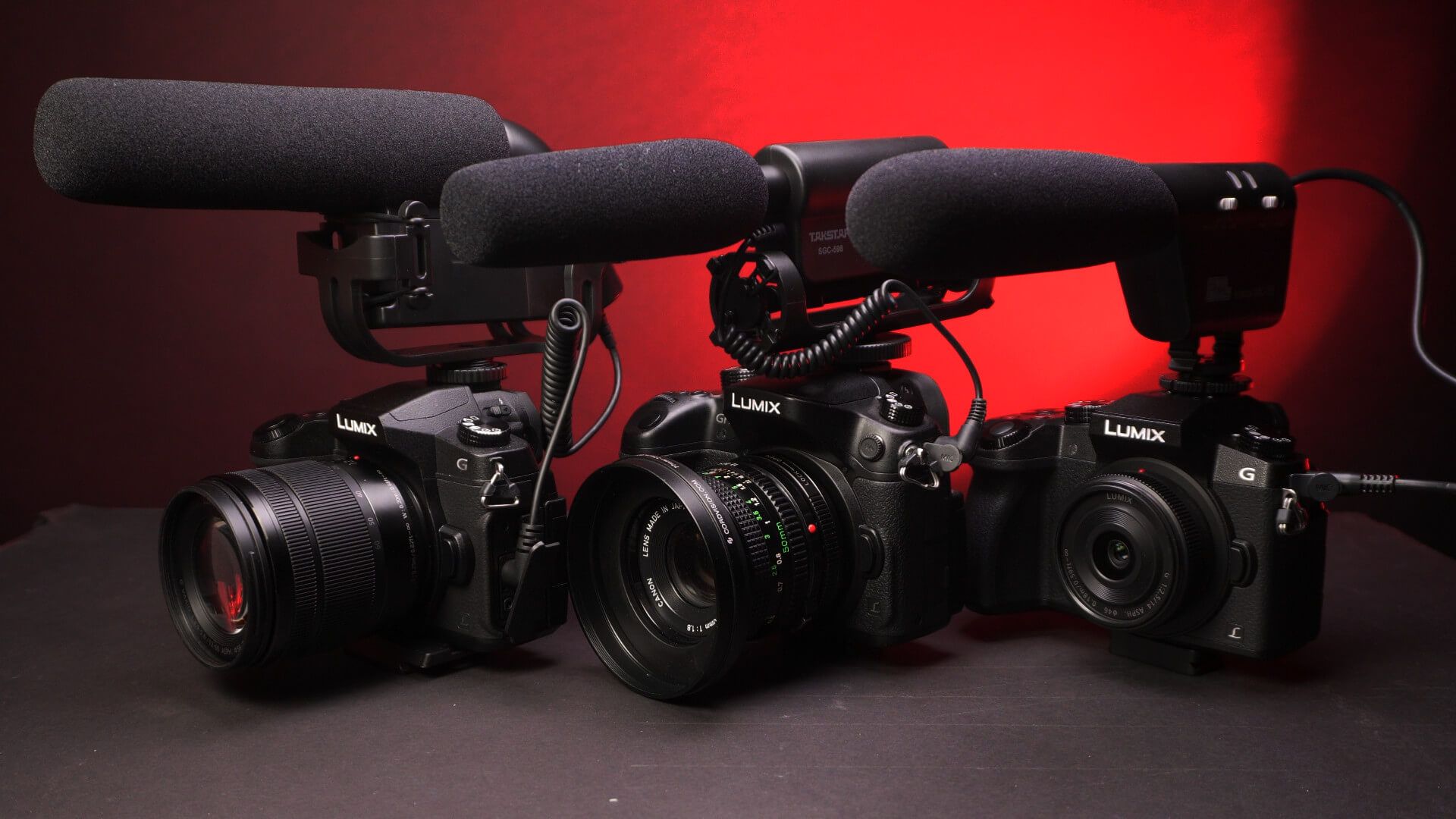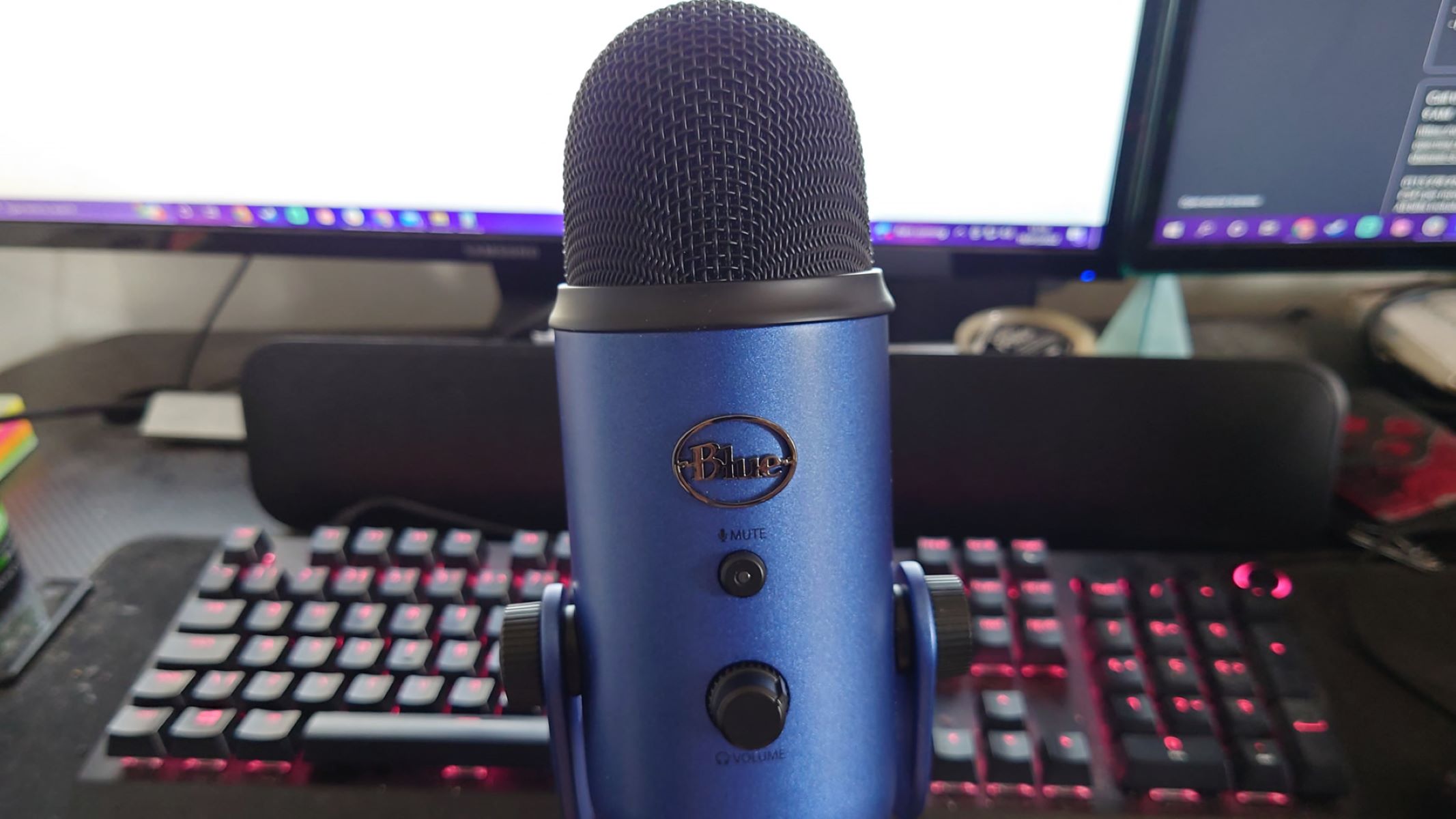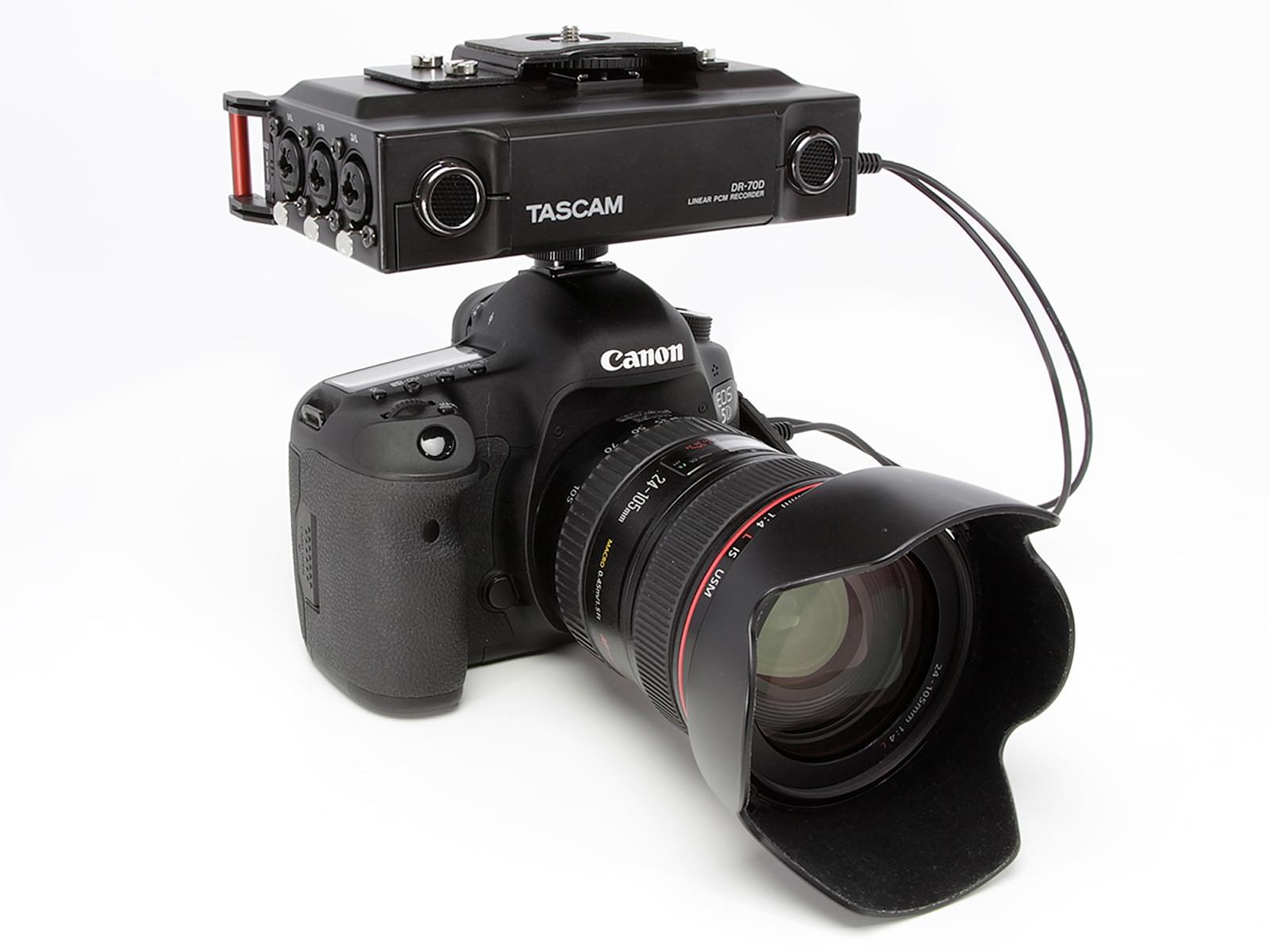Introduction
Introduction
Choosing the right microphone for a DSLR camera is crucial for capturing high-quality audio in video production. While DSLR cameras excel in delivering stunning visual content, their built-in microphones often fall short in capturing clear, crisp sound. This is where an external microphone comes into play, enhancing the overall audiovisual experience.
A quality microphone can make a significant difference in the audio quality of your videos. Whether you're a vlogger, filmmaker, or content creator, understanding the key factors to consider when selecting a microphone for your DSLR camera is essential for achieving professional-grade audio recordings. In this guide, we will explore the important features and considerations to keep in mind when choosing a microphone that best suits your DSLR camera setup.
A high-quality microphone can effectively capture the nuances of sound, from subtle whispers to booming voices, and convey the intended message with clarity and precision. Additionally, it can minimize unwanted background noise, resulting in a polished and professional audio track that complements the visual content.
When it comes to choosing a microphone for your DSLR camera, various factors such as microphone type, directionality, frequency response, sensitivity, size and weight, connectivity, mounting options, and price range play a crucial role in determining the suitability of the microphone for your specific needs.
Understanding these factors will empower you to make an informed decision when selecting a microphone that aligns with your budget, shooting style, and audio requirements. Let's delve into the world of DSLR camera microphones and explore the key features that can elevate the audio quality of your video productions.
Types of Microphones
When considering a microphone for your DSLR camera, it’s essential to understand the different types available and their respective characteristics. The two primary types of microphones commonly used in video production are condenser microphones and shotgun microphones.
Condenser Microphones:
Condenser microphones, also known as capacitor microphones, are popular choices for capturing high-quality audio in controlled environments. They are highly sensitive and excel at reproducing the nuances of sound with exceptional clarity. These microphones require power, often supplied by a battery or phantom power from the camera or an external source. Condenser microphones are ideal for studio settings, interviews, and indoor shooting where ambient noise can be minimized.
Shotgun Microphones:
Shotgun microphones, characterized by their long, narrow design, are highly directional microphones that excel at capturing sound from a specific direction while minimizing ambient noise from the surroundings. They are commonly used in outdoor settings, such as filmmaking, vlogging, and documentary production, where capturing targeted audio while reducing background noise is crucial. Shotgun microphones offer versatility and are well-suited for capturing dialogue and atmospheric sounds in various shooting conditions.
Understanding the characteristics and applications of these microphone types is essential for determining which one best aligns with your specific recording needs. Whether you require the sensitivity and precision of a condenser microphone in a controlled environment or the directional focus of a shotgun microphone for outdoor shooting, selecting the appropriate microphone type is a pivotal decision in enhancing the audio quality of your DSLR camera recordings.
Directionality
Directionality is a critical aspect to consider when choosing a microphone for your DSLR camera, as it determines how the microphone captures sound from different directions. Understanding the various directional patterns of microphones is essential for selecting the most suitable option based on your recording environment and the intended audio sources.
Omni-directional Microphones:
Omni-directional microphones capture sound equally from all directions, offering a natural and immersive audio experience. These microphones are ideal for recording ambient sounds, group discussions, and scenarios where capturing a 360-degree audio field is desired. While they provide a wide pickup pattern, they may also capture unwanted background noise in noisy environments.
Cardioid Microphones:
Cardioid microphones are characterized by their heart-shaped pickup pattern, emphasizing sound capture from the front while minimizing noise from the rear and sides. This directional pattern makes them well-suited for recording single subjects or isolating specific sound sources, making them popular choices for interviews, vlogging, and studio recordings.
Super-cardioid and Hyper-cardioid Microphones:
Super-cardioid and hyper-cardioid microphones offer even narrower pickup patterns, focusing on capturing sound from the front while effectively rejecting off-axis noise. These directional microphones are commonly used in filmmaking and outdoor recording, allowing for precise audio capture while minimizing environmental noise and distractions.
Understanding the directional characteristics of microphones is crucial for tailoring your audio capture to the specific requirements of your shooting environment. Whether you need an omni-directional microphone for immersive ambient recordings, a cardioid microphone for focused sound isolation, or a super-cardioid/hyper-cardioid microphone for precise directional capture, selecting the appropriate directional pattern is instrumental in achieving optimal audio quality for your DSLR camera recordings.
Frequency Response
Frequency response is a crucial consideration when selecting a microphone for your DSLR camera, as it directly influences the microphone’s ability to capture a wide range of frequencies accurately. A microphone’s frequency response refers to its sensitivity to different frequencies, typically measured in Hertz (Hz). Understanding the frequency response of a microphone is essential for ensuring that it can effectively capture the nuances of various audio sources, from low-pitched sounds to high-frequency details.
Flat Frequency Response:
Microphones with a flat frequency response are designed to capture audio signals with equal sensitivity across the entire audible frequency spectrum. This characteristic makes them versatile for capturing a wide range of sound sources with accuracy and fidelity. Flat-response microphones are well-suited for recording music, vocals, and other audio content where a natural and balanced representation of frequencies is essential.
Presence Boost:
Some microphones feature a presence boost in their frequency response, emphasizing the mid-range frequencies to enhance vocal clarity and articulation. This characteristic is beneficial for capturing speech, vocals, and instruments with added presence and intelligibility, making them popular choices for podcasting, broadcasting, and vocal recording applications.
Roll-off and High-pass Filters:
Microphones equipped with roll-off and high-pass filters are designed to attenuate or eliminate low-frequency rumble and unwanted ambient noise, allowing for cleaner audio capture. These features are valuable in outdoor recording, interviews, and scenarios where minimizing low-frequency interference is essential for achieving clear and focused audio recordings.
Understanding the frequency response characteristics of microphones enables you to select a microphone that aligns with the specific audio content you intend to capture. Whether you require a flat-response microphone for accurate sound reproduction, a presence-boosted microphone for vocal emphasis, or a microphone with roll-off filters for noise reduction, considering the frequency response is pivotal in achieving the desired audio fidelity for your DSLR camera recordings.
Sensitivity
When evaluating microphones for DSLR camera use, sensitivity is a crucial factor to consider as it directly impacts the microphone’s ability to capture sound with clarity and precision. Microphone sensitivity refers to the magnitude of the electrical output signal produced in response to sound pressure levels. Understanding the sensitivity of a microphone is essential for ensuring optimal audio capture across various recording scenarios.
High Sensitivity Microphones:
Microphones with high sensitivity are capable of capturing subtle sound details and low-level audio signals with exceptional accuracy. These microphones are well-suited for recording quiet or distant sound sources, making them ideal for nature recording, ASMR content creation, and capturing ambient sounds with intricate nuances. However, high sensitivity microphones may also be more susceptible to capturing background noise and handling noise, requiring careful consideration of the recording environment.
Low Sensitivity Microphones:
Microphones with lower sensitivity are less responsive to subtle sound variations and are more suitable for high-volume sound sources or environments with elevated ambient noise levels. These microphones are commonly used in live event recording, concerts, and scenarios where minimizing environmental noise is crucial for achieving clear and focused audio recordings.
Understanding the sensitivity characteristics of microphones enables you to select a microphone that aligns with the specific sound sources and recording environments you intend to capture. Whether you require a high-sensitivity microphone for capturing delicate audio nuances or a low-sensitivity microphone for handling high-volume sound sources, considering the microphone’s sensitivity is instrumental in achieving optimal audio fidelity for your DSLR camera recordings.
Size and Weight
When selecting a microphone for your DSLR camera, considering the size and weight of the microphone is essential, as it directly impacts portability, handling, and overall convenience during recording sessions. The physical dimensions and weight of a microphone play a significant role in its practicality and compatibility with your DSLR camera setup.
Compact and Lightweight Microphones:
Compact and lightweight microphones offer enhanced portability and ease of handling, making them ideal for on-the-go recording, vlogging, and run-and-gun shooting scenarios. These microphones are well-suited for content creators who prioritize mobility and versatility, allowing for seamless integration with compact DSLR camera setups without adding unnecessary bulk or weight.
Full-size and Studio-grade Microphones:
Full-size and studio-grade microphones, while potentially larger and heavier, offer advanced audio capabilities and professional-grade sound reproduction. These microphones are commonly used in controlled studio environments, filmmaking, and audio production where achieving premium audio quality is paramount, even at the expense of added size and weight.
Considering the size and weight of a microphone in relation to your DSLR camera setup and intended shooting scenarios is crucial for ensuring ergonomic compatibility and practicality. Whether you prioritize the portability of a compact microphone for on-the-go recording or require the advanced features of a full-size microphone for studio-grade audio production, selecting a microphone that aligns with your size and weight preferences is pivotal in enhancing the overall audiovisual experience of your DSLR camera recordings.
Connectivity
When choosing a microphone for your DSLR camera, understanding its connectivity options is crucial for seamless integration and optimal audio performance. The connectivity features of a microphone determine how it interfaces with your DSLR camera, audio recording devices, and external accessories, ultimately influencing the versatility and usability of the microphone in various recording scenarios.
3.5mm TRS/TRRS Jack:
Many DSLR cameras feature a 3.5mm TRS (Tip-Ring-Sleeve) or TRRS (Tip-Ring-Ring-Sleeve) microphone input jack, allowing for direct connection with compatible microphones. Understanding the compatibility of the microphone’s connector type with your camera’s input is essential for seamless plug-and-play functionality, enabling you to record high-quality audio without the need for additional adapters or accessories.
XLR Connectivity:
Some professional-grade microphones feature XLR connectors, offering balanced audio connectivity for enhanced signal integrity and compatibility with external audio interfaces, mixers, and recording devices. XLR-equipped microphones provide versatile connectivity options, making them suitable for studio recording, filmmaking, and scenarios where advanced audio routing and control are required.
Wireless Connectivity:
Wireless microphones, utilizing Bluetooth or proprietary wireless technologies, offer the flexibility of untethered audio capture, making them ideal for dynamic recording setups, interviews, and scenarios where mobility and freedom of movement are essential. Understanding the wireless connectivity options and compatibility with your DSLR camera or external receivers is pivotal for leveraging the convenience and versatility of wireless microphone systems.
Considering the connectivity options of a microphone in relation to your DSLR camera and recording setup enables you to select a microphone that seamlessly integrates with your equipment, offering reliable and efficient audio capture. Whether you prioritize direct plug-and-play compatibility, require XLR connectivity for advanced audio routing, or seek the freedom of wireless microphone systems, understanding the connectivity features is instrumental in achieving optimal audio performance for your DSLR camera recordings.
Mounting Options
When selecting a microphone for your DSLR camera, considering the mounting options is essential for securely attaching the microphone to your camera setup and achieving optimal audio capture. The versatility and compatibility of a microphone’s mounting options play a crucial role in facilitating convenient and stable placement, ensuring that the microphone integrates seamlessly with your DSLR camera rig.
Hot Shoe Mounting:
Many DSLR cameras feature a hot shoe mount on top of the camera body, allowing for the direct attachment of compatible microphones. Microphones equipped with hot shoe mounts offer convenient and secure placement on the camera, providing a streamlined setup for on-the-go recording, vlogging, and run-and-gun shooting scenarios.
Shock Mounts and Suspension Systems:
Microphones equipped with shock mounts or suspension systems are designed to minimize handling noise and vibrations, ensuring clean and isolated audio capture. These mounting options are beneficial for reducing unwanted mechanical noise during handheld or movement-intensive recording, making them suitable for outdoor shooting and scenarios where stable audio capture is essential.
Boom Pole and External Mounting:
For versatile audio capture and positioning, some microphones are compatible with boom poles and external mounting accessories, allowing for elevated or off-camera placement. This flexibility is advantageous for filmmaking, interviews, and scenarios where precise audio capture from a distance or unconventional angles is required.
Understanding the mounting options of a microphone in relation to your DSLR camera setup and recording requirements enables you to select a microphone that offers secure attachment and versatile placement options. Whether you prioritize the convenience of hot shoe mounting, require shock mounts for stable handheld recording, or seek the flexibility of external mounting accessories, considering the mounting options is pivotal in achieving optimal audio capture for your DSLR camera recordings.
Price Range
When exploring microphone options for your DSLR camera, understanding the price range of available microphones is crucial for aligning the features and performance with your budget and recording needs. Microphones come in a wide range of price points, offering varying levels of audio quality, build construction, and additional features. Consideration of the price range allows you to make an informed decision based on the value and capabilities offered within your budget constraints.
Entry-level Microphones:
Entry-level microphones, often budget-friendly, provide basic audio capture capabilities suitable for beginners, hobbyists, and casual content creators. These microphones offer essential functionality for improving audio quality over built-in camera microphones without a significant investment, making them accessible options for entry-level DSLR videography and content creation.
Mid-range Microphones:
Mid-range microphones strike a balance between affordability and enhanced audio performance, offering improved sound quality, durability, and additional features such as selectable polar patterns, integrated shock mounts, and versatile connectivity options. These microphones cater to intermediate users and content creators seeking a notable upgrade in audio fidelity and functionality without breaking the bank.
Professional-grade Microphones:
Professional-grade microphones, positioned at higher price points, deliver superior audio quality, advanced features, and robust build quality suitable for demanding recording environments, studio productions, and professional filmmaking. These microphones offer exceptional clarity, precision, and versatility, catering to professionals and enthusiasts who prioritize uncompromising audio performance and reliability.
Understanding the price range of microphones allows you to evaluate the cost-to-performance ratio and make an informed decision based on your specific recording requirements and long-term audio production goals. Whether you opt for an entry-level microphone to enhance basic audio quality, a mid-range microphone for improved functionality, or a professional-grade microphone for uncompromising audio performance, considering the price range is instrumental in selecting a microphone that aligns with your budget and audio production aspirations.
Conclusion
Choosing the right microphone for your DSLR camera is a pivotal decision that directly impacts the quality and clarity of your audio recordings. By considering the diverse array of microphone types, directionality, frequency response, sensitivity, size and weight, connectivity options, mounting features, and price range, you can make an informed choice that aligns with your specific recording needs and creative aspirations.
Each aspect of microphone selection plays a crucial role in enhancing the audiovisual experience, whether you are a vlogger capturing on-the-go content, a filmmaker producing cinematic masterpieces, or a content creator striving for professional-grade audio quality. Understanding the nuances of microphone features empowers you to elevate the overall production value of your videos and engage your audience with immersive and crystal-clear audio.
Ultimately, the ideal microphone for your DSLR camera is the one that seamlessly integrates with your recording setup, complements your shooting style, and faithfully captures the sonic details that bring your visual content to life. Whether you prioritize portability, advanced audio features, or professional-grade performance, the right microphone enhances the storytelling potential of your videos and ensures that your audience experiences every moment with unparalleled audio fidelity.
As you navigate the dynamic landscape of DSLR camera microphones, consider the unique demands of your recording environments, the versatility required for diverse shooting scenarios, and the long-term value that a high-quality microphone brings to your creative endeavors. With the right microphone by your side, you can embark on a journey of immersive audio storytelling, capturing the essence of every moment with precision and artistry.







